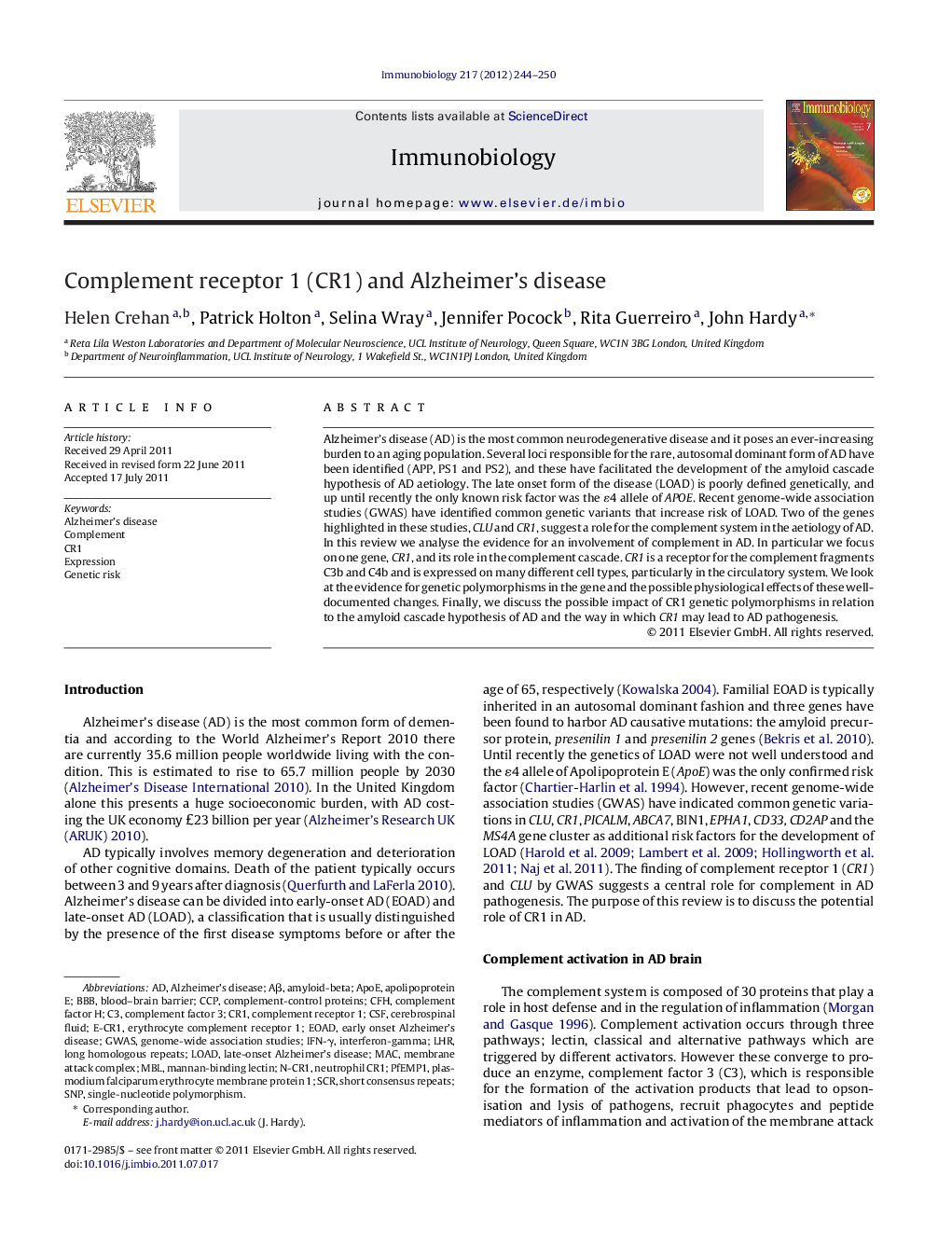| Article ID | Journal | Published Year | Pages | File Type |
|---|---|---|---|---|
| 10941099 | Immunobiology | 2012 | 7 Pages |
Abstract
Alzheimer's disease (AD) is the most common neurodegenerative disease and it poses an ever-increasing burden to an aging population. Several loci responsible for the rare, autosomal dominant form of AD have been identified (APP, PS1 and PS2), and these have facilitated the development of the amyloid cascade hypothesis of AD aetiology. The late onset form of the disease (LOAD) is poorly defined genetically, and up until recently the only known risk factor was the É4 allele of APOE. Recent genome-wide association studies (GWAS) have identified common genetic variants that increase risk of LOAD. Two of the genes highlighted in these studies, CLU and CR1, suggest a role for the complement system in the aetiology of AD. In this review we analyse the evidence for an involvement of complement in AD. In particular we focus on one gene, CR1, and its role in the complement cascade. CR1 is a receptor for the complement fragments C3b and C4b and is expressed on many different cell types, particularly in the circulatory system. We look at the evidence for genetic polymorphisms in the gene and the possible physiological effects of these well-documented changes. Finally, we discuss the possible impact of CR1 genetic polymorphisms in relation to the amyloid cascade hypothesis of AD and the way in which CR1 may lead to AD pathogenesis.
Keywords
LHRPfEMP1CR1CCPAβCFHMBLEOADIFN-γamyloid-betaApoeapolipoprotein EEarly onset Alzheimer's diseaseExpressioninterferon-gammaLoadAlzheimer's diseaseLate-onset Alzheimer's diseaseshort consensus repeatsComplement factor HGenetic riskBlood–brain barrierBBBMannan-binding lectinCSFCerebrospinal fluidComplementGenome-wide association studiesGWASMACcomplement factor 3Plasmodium falciparum erythrocyte membrane protein 1Single-nucleotide polymorphismmembrane attack complexSNPcomplement receptor 1SCR
Related Topics
Life Sciences
Biochemistry, Genetics and Molecular Biology
Cell Biology
Authors
Helen Crehan, Patrick Holton, Selina Wray, Jennifer Pocock, Rita Guerreiro, John Hardy,
